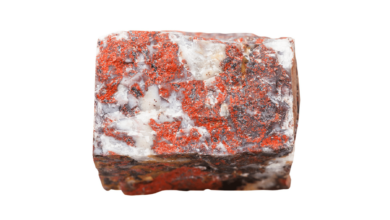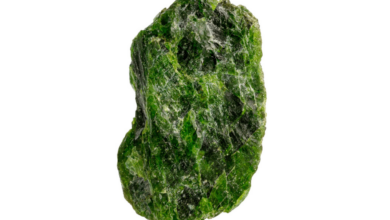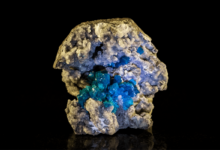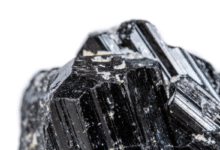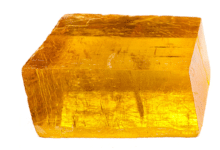Can I Put Honey Calcite In The Sun? Will It Fade? (Answered)

One common question that arises is whether or not honey calcite can be placed in the sun. Exposure to direct sunlight can cause the crystal to fade over time, diminishing its beautiful color. Understanding the alternatives to sunlight for charging honey calcite and the best placements to avoid fading is crucial.
Key Takeaways
- Honey calcite is a beautiful golden-yellow crystal with various healing properties.
- Direct sunlight exposure causes honey calcite to fade; it’s not recommended for charging.
- Explore alternative charging methods and suitable placements to preserve honey calcite’s color.
Can I Put Honey Calcite In The Sun?
Prolonged exposure to sunlight can have a detrimental fading effect on the vibrant color of honey calcite. This fading occurs as the sun’s ultraviolet (UV) rays break down the crystal’s molecular structure.
UV rays are known to cause color changes in many different types of crystals, and honey calcite is no exception.
To preserve the color and integrity of your honey calcite, it is best to keep it away from direct sunlight. Instead, consider placing it in a well-lit area that receives indirect or filtered sunlight. This will still allow the crystal to catch the light and show off its beauty without causing any damage.
While it might be tempting to place your honey calcite crystal in the sun to catch the light, doing so may cause it to lose its vibrant color. By keeping the crystal out of direct sunlight and opting for indirect or filtered light instead, you can maintain its stunning appearance for years.
How Fast Will Honey Calcite Fade In The Sun?
When you expose honey calcite to sunlight, it may fade over time. The rate of fading depends on several factors, including the intensity and duration of sun exposure, as well as any protective measures you take. Direct sunlight has a stronger effect on honey calcite’s color, so protecting your honey calcite is important if you want to preserve its vibrancy.
If you keep your honey calcite in an area with indirect sunlight, the fading process will be slower. Regularly rotating your honey calcite’s position can help minimize the damaging effects of sunlight. It’s hard to determine an exact time frame for the fading process, as it varies based on individual factors. However, with proper care, you can extend the life of your honey calcite’s color.
To help maintain your honey calcite’s color, consider storing it in a shaded or covered area when it’s not on display. This will limit its sun exposure and slow the fading process. Additionally, avoid exposing your honey calcite to extreme temperature fluctuations, as this can also impact its color and general appearance. Following these precautions allows you to enjoy your honey calcite’s beauty for longer.
Can You Charge Honey Calcite In The Sun? (Not Recommended)

Although charging your honey calcite in the sun might sound like a good idea, it is not recommended. This section will discuss why this crystal should not exposed to direct sunlight.
First, sunlight can affect the color and appearance of honey calcite. Prolonged sun exposure can cause the crystal to fade or change color, making it less vibrant and potentially less potent. If you’re using honey calcite for its aesthetic appeal or for energetic purposes, such alterations could be undesirable.
Instead of direct sunlight, you can cleanse and charge honey calcite using other methods:
- Moonlight: A gentler option is to charge it under the soft glow of moonlight, especially during the full moon.
- Sound therapy: Using a tuning fork or singing bowl, create vibrations that cleanse and energize the crystal.
- Smudging: Burning sage or palo santo can clear away any negative energies from your honey calcite.
- Burying: Placing the crystal in the earth, either directly or in a cloth pouch, for 24 hours can help ground and clear the energies.
Remember that honey calcite is a soft mineral with a Mohs hardness 3. This means it can get easily scratched or damaged. While charging in the sun, it might be subjected to harsh elements or accidentally drop or collide with other materials. To keep your crystal in the best condition, always handle it with care and store it in a safe, secure place when not in use.
In summary, charging honey calcite in the sun is not the best approach due to the potential fading of color and the risk of damage. Instead, opt for gentler methods such as moonlight, sound therapy, smudging, or burying the crystal in the earth. This will keep your honey calcite vibrant and energetically charged without adverse effects.
Where To Put Honey Calcite To Avoid The Sun
Wear A Honey Calcite Crystal Necklace Under Your Shirt
Wearing a honey calcite crystal necklace is a convenient way to keep your stone close to you while protecting it from direct sunlight. By wearing the necklace under your shirt, you prevent it from being exposed to the sun’s intense rays, which can damage or fade the stone. Additionally, keeping the honey calcite close to your body can help you benefit from its healing properties.
Place In Your Office Out Of Direct Sunlight
Your office is another great place to display your honey calcite, as long as it’s kept out of direct sunlight. You can place the crystal on your desk or a nearby shelf, ensuring it’s in a shaded spot. This will help maintain the stone’s vibrant color and energy while allowing you to appreciate its beauty during work hours. With honey calcite’s reputation as a powerful energy cleanser and amplifier, it can be particularly helpful in a busy office environment.
Place In Your Bedroom Out Of Direct Sunlight
The bedroom is another ideal location for your honey calcite, as long as it’s not exposed to the sun’s rays. Placing the stone on a nightstand or dresser in a shaded area will protect it from damage while allowing you to enjoy its energy and aesthetic appeal. Honey calcite is known for its positive healing properties, and having the stone close to where you sleep may enhance the quality of your rest and relaxation.
List of Ways to Charge Honey Calcite to Avoid the Sun
Charging your honey calcite crystal can enhance its numerous benefits, especially its powerful connection to the chakra system. To avoid exposure to direct sunlight, which may cause discoloration or damage to your honey calcite, there are several alternative methods for charging.
Moonlight
Charging your honey calcite under the full moon is a gentle yet effective way to restore and revitalize its energy. Place your crystal outside or on a windowsill where it can absorb the moon’s energy overnight.
Sound Healing
Sound frequencies, such as those produced by a singing bowl or tuning fork, can help cleanse and charge your honey calcite. This method is especially beneficial for unlocking its powerful healing energy.
Other Crystals
Some crystals, like amethyst, selenite, and clear quartz, are known for their ability to cleanse and charge fellow gemstones. Simply placing honey calcite on or near one of these crystals can effectively charge it.
Visualization and Intention
Focus your intent on the honey calcite, visualizing it as being filled with positive energy. Your thoughts and intentions can significantly impact your crystal’s energy levels.
Water (Not Recommended)
I do not recommend using water on a regular basis as there is a chance for honey calcite to degrade over time by absorbing water, especially when using tap water. Check out our complete guide: Can Honey Calcite Go In Water? Will It Dissolve? (Answered)
Remember to experiment with different methods to find what works best for you and your honey calcite crystal. By keeping it charged and cleansed, you can ensure its energy remains potent and ready to support your spiritual journey.


